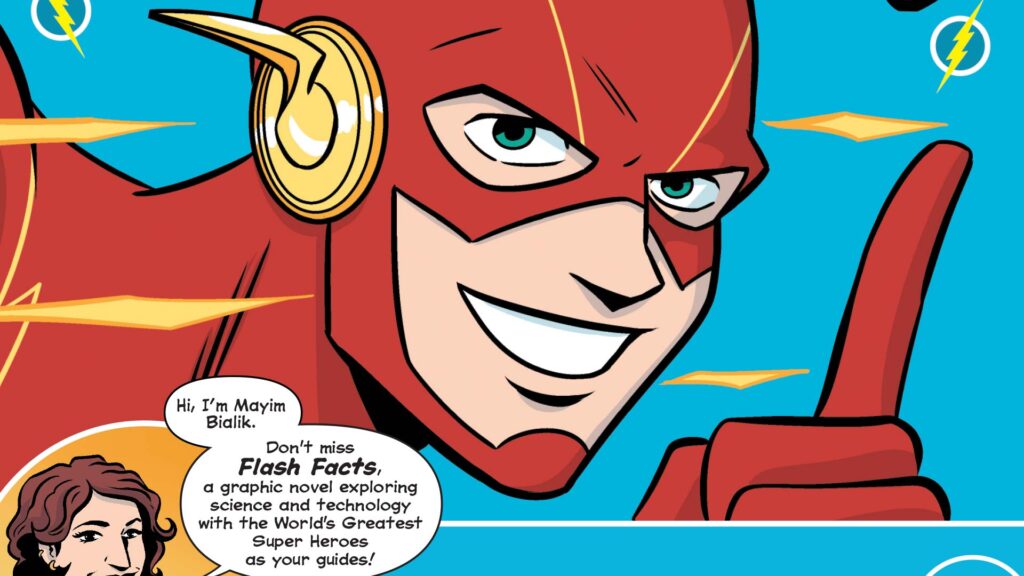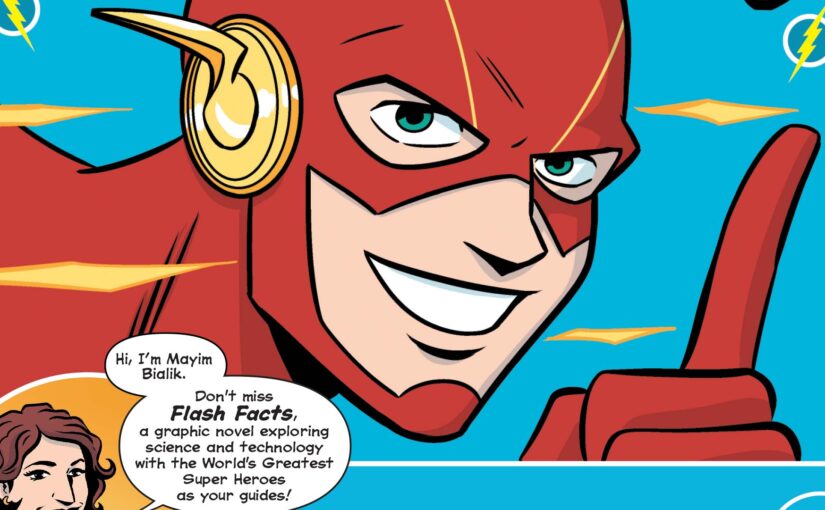Which came first, the superheroes or the STEM facts? Flash Facts is an original graphic novel from DC Comics, specifically their imprint, DC Graphic Novels for Kids. It posits various STEM-minded questions and places them in the wheelhouse of DC superheroes that are more than likely to have knowledge on the subject matter. For example, The Flash probably knows a lot about forensic science and crime-solving, so let’s let him address that. As an educator and parent, I love Flash Facts. Middle school ages love DC superheroes, but will they dig them when they’re talking more about STEM than catching bad guys?

The answer is yes, for most of the graphic novel fans out there, but more on that in a moment. Flash Facts is edited by #1 New York Times Bestselling author, Mayim Bialik, Ph.D. The book has a great forward in which she tells about her love of science and her path between acting, parenting, and studying. There are 10 complete stories in the book that set up, illustrate and solve science or STEM situations. Each of these stories has different authors, as well as, illustrators and people who letter them. The result is that some of the stories look very different than others. That makes sense because people’s style of illustrations and storytelling varies from artist to artist.
The fact that there are 10 stories in the graphic novel works in the book’s favor. If a young reader doesn’t like one style of art then they’ll be more attracted to other stories. The graphic novel lover in me also says that this will introduce new or different styles of art to those young readers who are set in their ways. Most of the stories in Flash Facts have a traditional, action-oriented look to them. The content is all-age appropriate, in that it creates smart, potentially older stories that can be enjoyed or understood by audiences in elementary school. The great aspect of an effective all-age graphic novel or comic book is that it doesn’t dumb down content. It presents material that’s intelligent, has elements that older readers will understand at a more advanced level, and provide breadcrumbs for them to research it more.

That’s what Flash Facts does very well. From learning about Quarks with Mary Marvel and Atom to virtual reality there are potentially very complex, yet readers are provided with a high-level view that’s educational but doesn’t talk down to them. Each story has a DC superhero being asked the question about something STEM-related. Most upper elementary school fans will have a couple of subjects that they’ve heard of but don’t really know how they work. Some of the 10 subjects will be unknown and serve as a complete introduction to a STEM field. The teacher and parent in me, wistfully hope that one of those kids who happens to hear about energy, where it comes from; and will then go on to pioneer its usage on a worldwide scale.
Flash Facts will resonate with STEM-curious people who are looking for a different vehicle in which to discover their science. It’s also a very smart graphic novel that also uses its artistic abilities to attract new fans to the superhero sect. Whether or not kids come for the STEM and stay for the superheroes or come for the superheroes and stay for the STEM will completely depend on their interest level now. However, either camp will find something to like about Flash Fact, although either of them might not enjoy it as much as the source material that brought them there.
Flash Facts is from DC Comics and features a wide variety of creators.
There are affiliate links in this post.





 Facebook
Facebook Twitter
Twitter Flickr
Flickr GooglePlus
GooglePlus Youtube
Youtube